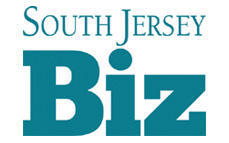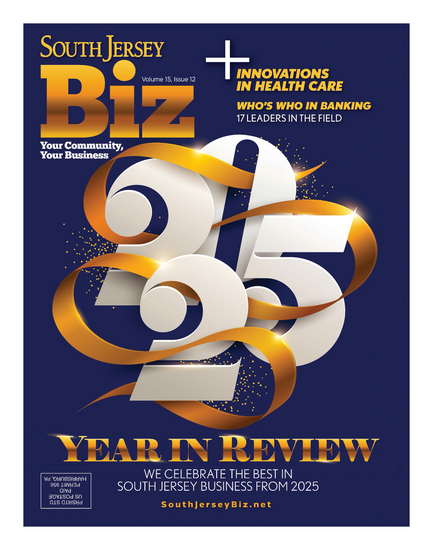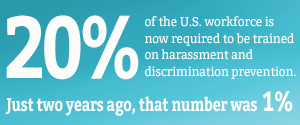
This year still has one more quarter to go, and it already seems like the entirety of 2024 has been filled with earth-shattering news from both home and abroad nearly every news cycle.
But as hard as it may be to face the future with anything more than cautious optimism sometimes, local financial experts have largely described 2024—so far—as being a decidedly pleasant surprise, economically speaking.
“It far exceeded expectations, if you’re speaking about the return on investment, how did the market do, how did the average company do, for a variety of reasons,” explains John Torrence, managing partner of Masso Torrence Wealth Management. “First of all, ’22 was a horrible year for companies, so 2023 was basically perceived as the bounce-back year: market goes down, market comes back up, companies’ expectations were lowered and lowered and lowered. Then, all of a sudden, companies were beating expectations when they would come out with their earnings reports, and everybody’s starting to feel a little better. Going into ’24, the general consensus was … you’ll probably see a single-digit return on the S&P 500, the average company will grow 5, 6, 7%—and things have far exceeded that.”
Those tentatively rising expectations have been further buoyed by the long-anticipated Federal Reserve interest-rate cut last month—the first since March 2020. A while it will take some time for that impact to work its way through the economy to the consumer, it is an indication that some relief is on the way for households and businesses that have been feeling the crush of mounting inflation, even if its arrival was a little later than many had anticipated.
“It’s probably late in the game for [the Fed] to have done this, but that’s beyond the point—they did it,” says Stan Molotsky, president and CEO of The SHM Financial Group. “You won’t see any effects on this until six months down the road, and then it’s a matter of what they’re going to do next. The general consensus would be that they’ll probably cut [rates] again, maybe right after or right before the election, maybe not a half a point or a quarter of a point, and all that makes a certain amount of sense to try and anticipate an economy that’s struggling and not quite getting to where it should be.”
After all, for many, that glimmer of relief to come is certainly a welcome development after years of economic hardships’ ripple effects not only making unwanted waves in nearly every facet of life but also leaving broad segments of the population desperate for more stable ground and a more sustainable financial landscape.
“The Fed is moving expeditiously and it seems as if they’ve abated inflations,” notes Michael Affuso, president and CEO of the New Jersey Bankers Association. “But the reality of it is if in 2020 you bought an item for a dollar, and then the next year it went up to $1.10 and the next year it went up to $1.20 and next year it went up to $1.30 and then the following year it only went up by 5 cents, well, inflation was cut in half; however, it’s still 35% more than it was just four years ago. There’s dampening inflation or disinflation, but there’s not deflation. So you got to think about how that all plays through—like, look at the housing market. The price of housing has gone up significantly in what was a rising-rate environment. Why was that? Well, because of lack of supply. And you also have a whole bunch of people who have 3% mortgages that aren’t going to sell and aren’t going to move unless there’s either death or divorce because the marginal cost of moving up is really staggering.”
“Inflation has impacted decision-making on retirement plans, operations and the handling of debt,” adds Gary Farnesi, senior vice president, commercial banking-team lead at WSFS Bank, noting that such a universal hardship has underscored the need for more communication between business clients and the financial professionals in their corner. “In addition, decisions to sell the company, continue to operate or expand are in play for many clients. We take a consultative approach with our clients, focusing on the fundamentals and patient decision-making. Most importantly, ensure you have a strong connection to your banker, which is essential for navigating uncertain times.”
With 2024 being an election year, the unknowns of a tight presidential race do make for a more unpredictable final quarter than usual. And while the wild cards tend to come more from consumer behaviors than market ones, caution is still the most advisable tactic, especially in what Molotsky describes as being an election with a far different flavor than most.
“Be prepared for chaos and confusion, especially with this election where people are voting not necessarily for their favorite candidate, they’re voting against the least favorite candidate,” he cautions. “But we do have the checks and balances, so that’s a positive thing—a stalemate isn’t the worst thing in the world in this kind of environment. That why the markets are looking at this and saying, ‘Well, even if she wins, this will happen; even if he wins, this will happen,’ and hopefully it will be a balance … Markets will still be here six months from now, that’s not going to change.”
One way to find some sense of security is to anticipate potential potholes along the way—or, as Molotsky often advises, “prepare for the worst but hope for the best.” While some things are truly impossible to safeguard against an inherently uncertain world, there are purposefully, proactively selected instruments that can help fend off the nefarious entities threatening one’s financial state. As digital banking becomes a more deeply entrenched norm in today’s ways of doing business, the region’s banking institutions have spent the past few years proportionally strengthening how they protect customers’ money and sensitive data from the likes of cybersecurity attacks and hacking attempts.
“We have made significant investments in our cybersecurity posture, including penetration testing, vulnerability testing, enhanced staff training, multi-factor authentication, and we are upgrading our server system, as well,” says Mike Dinneen, CEO and president of First Harvest Credit Union. “These investments are not only to protect our institution, but this stronger digital infrastructure creates a stronger platform from which we can add digital tools to better meet our members’ expectations. A strong cybersecurity posture requires engagement, input and diligence from the entire staff.”
As October is National Cybersecurity Month, it’s an especially auspicious time to remind everyone that “cybersecurity is important all year long,” as Kimberly A. Cruz, Franklin Bank’s SVP of IT & Administration, points out. With that increased importance growing in proportion to digital banking’s popularity and accessibility, local financial experts are doing their part to both educate and assist the public in understanding the individual’s own role in keeping their assets safe while continually enhancing their own virtual fortresses.
“During October, we run a social media campaign, which is provided by the American Bankers Association. It’s called ‘Banks Don’t Ask That,’” Cruz begins. “We provide helpful cyber awareness tips through the use of humorous videos all month long. Each year, the bank’s investment in cybersecurity increases. It is the fastest-growing expense we have. We continually improve the bank’s IT infrastructure by making it more secure and harder for hackers to access. We also provide additional electronic products to our customers to alleviate paper check fraud, and we consistently tweak our debit card security settings so the system can intuitively flag suspicious debit card transactions and prevent them from going through the customers’ accounts.”
Organizations like banks and credit unions are typically maintaining and strengthening their cybersecurity offerings now, rather than rolling out such initiatives for the first time. While they are fine-tuning those established programs and tools to both suit a thoroughly modern audience and withstand hackers’ increasingly sophisticated threats, tactics and tools, cybersecurity remains a multifaceted defense necessitating an array of harmoniously moving parts.
As consumers get wise to a new crop of advanced security-breaching tactics—suspicious links, requests for private information paired with a telling urgency designed to subvert common sense, even text messages that claim to be from a familiar source but clearly aren’t—a novel and unfamiliar one is never far behind. And with generative artificial intelligence (AI) tools being able to convincingly replicate voices and communication patterns that might superficially appear to come from a trusted party making a desperate request for funds or information, the region’s financial professionals have had to similarly level-up the ways they protect their clients and their assets to beat high-tech scammers at their own game.
“Technology is advancing at an unprecedented pace,” Cruz affirms. “Although most industries are just scratching the surface with AI, the utilization of new technology will always be a balance of benefit and risk: We need to provide the banking technology that our customers demand while ensuring that their financial and personal data is safe. There is no doubt that technology has improved how we get and share information as well as the timeliness of it. Technology can recognize fraud on an account within minutes of it happening, which certainly is a plus for both the customer and the bank. … The system can identify a purchase or transaction which seems out of character for that customer. It can then be stopped or pushed through, depending on the response from the customer. There have also been huge advancements for business customers. They can tell if a check clearing their account has been altered or counterfeited before authoring the check to be paid. It is a whole new world of banking.”
But AI and other high-tech options aren’t just protecting consumers: Those tools are empowering clients, too, and allowing them to do their banking in ways and at times that make the most sense for their needs and lifestyles. That convenience and personalization is an investment that financial institutions continue to invest in to both meet their users’ needs and help their teams do their jobs well.
“We have and always will place great importance on being connected to our clients. This enables us to be in-step with their needs and provide guidance that will help them succeed,” says Farnesi. “As an institution, we’ve learned to work through any obstacles—whether during the pandemic, periods of inflation or other challenges—to balance internal capacity and capabilities with dedicated associates to provide high touch personal service.”
“Technology has allowed us to digitize the member banking experience, from more traditional tools such as online banking, bill pay, eStatement, and remote deposit, to additional emerging preferences such as P2P payments and mobile point of sale payments, both of which we’ve recently implemented,” Dinneen adds. “In addition, our back office operations are benefiting from digital record keeping, video conferencing, automated underwriting and loan decisions. We are now exploring how we can better offer personalized products and services through predictive artificial intelligence tools as well. Digital delivery, self-service and instant solutions have become an expectation with consumers, rather than an outlier. In addition, technology has accelerated embedded financing models such as dealership and other point-of-sale lending, which makes the consumer journey infinitely easier and quicker than the traditional model of visiting a branch to obtain a loan to purchase a vehicle, service or other goods.”
And while the ongoing migration toward digital banking remains a significant trend requiring fewer brick-and-mortar banking locations, those that remain are adapting to a 21st-century landscape.
“What I think you’re going to see with technology and artificial intelligence is that the work of the banker—the interaction between two humans—is going to be more of a value-add than an administrative function … it’s going to be more of a consultative function, but I think you’re always going to have the human connection,” Affuso says. “And I think you’re going to have less of [the physical bank branches]. The need to walk into a facility has shrunken but there will always be a need—it just won’t be as robust as it was in the past. … You will be going to a bank if you’re there for some consultative reason: If you’re not a W2 employee, if you have a small business, you really need more of a one-on-one, trusted-advisor type of arrangement, and that is where banks’ bread and butter is.”
As for the immediate future, though, local experts are quick to point out that predictions are notoriously difficult to venture in an unpredictable world. But patterns do eventually emerge when you know what to look for, whether it’s the movement of an economy in perpetual motion or corporate behaviors responding to the interconnectivity of market trends.
“People haven’t talked about what happens if 20% of the population is on some sort of weight-loss drug, what’s that going to when people don’t crave sweets? Hershey now speaks of the Ozempic and Wegovy factor, the sale of soda is down significantly because so many people are on these weight-loss drugs. … That’s why you’re seeing a lot of mergers in the big companies that make snack foods: Their sales are down because you don’t really have the desire for snacks, so if all of a sudden you get an even greater percentage of the population on these drugs, it is going to have an effect,” Torrence says. “Somebody once said that the job of an economist is to make fortune-tellers and weathermen look smart—there’s too many variables, you just don’t know what’s going to happen.”
Click here to subscribe to the free digital editions of South Jersey Biz.
To read the digital edition of South Jersey Biz, click here.
Published (and copyrighted) in South Jersey Biz, Volume 14, Issue 10 (October 2024).
For more info on South Jersey Biz, click here.
To subscribe to South Jersey Biz, click here.
To advertise in South Jersey Biz, click here.








